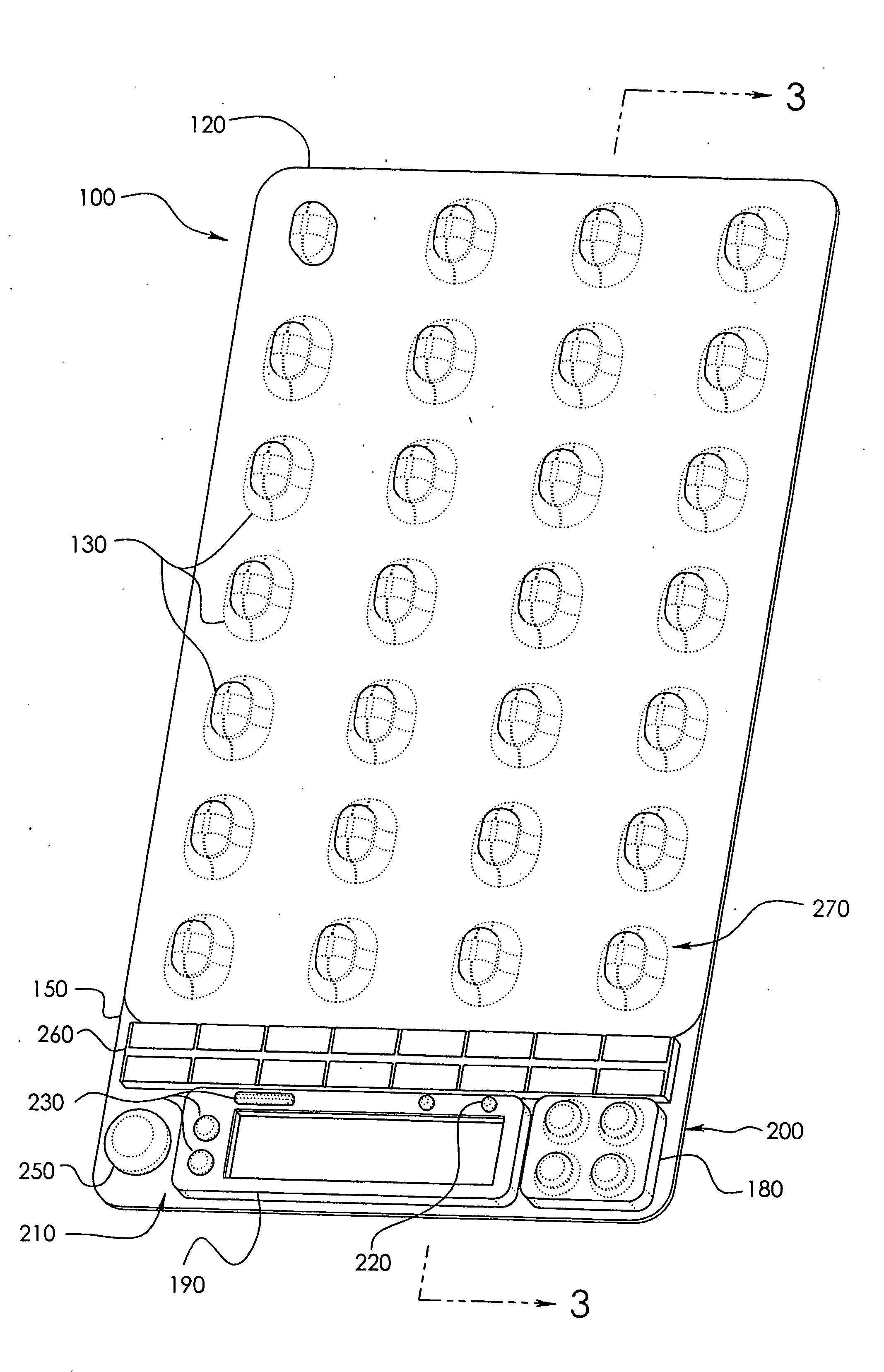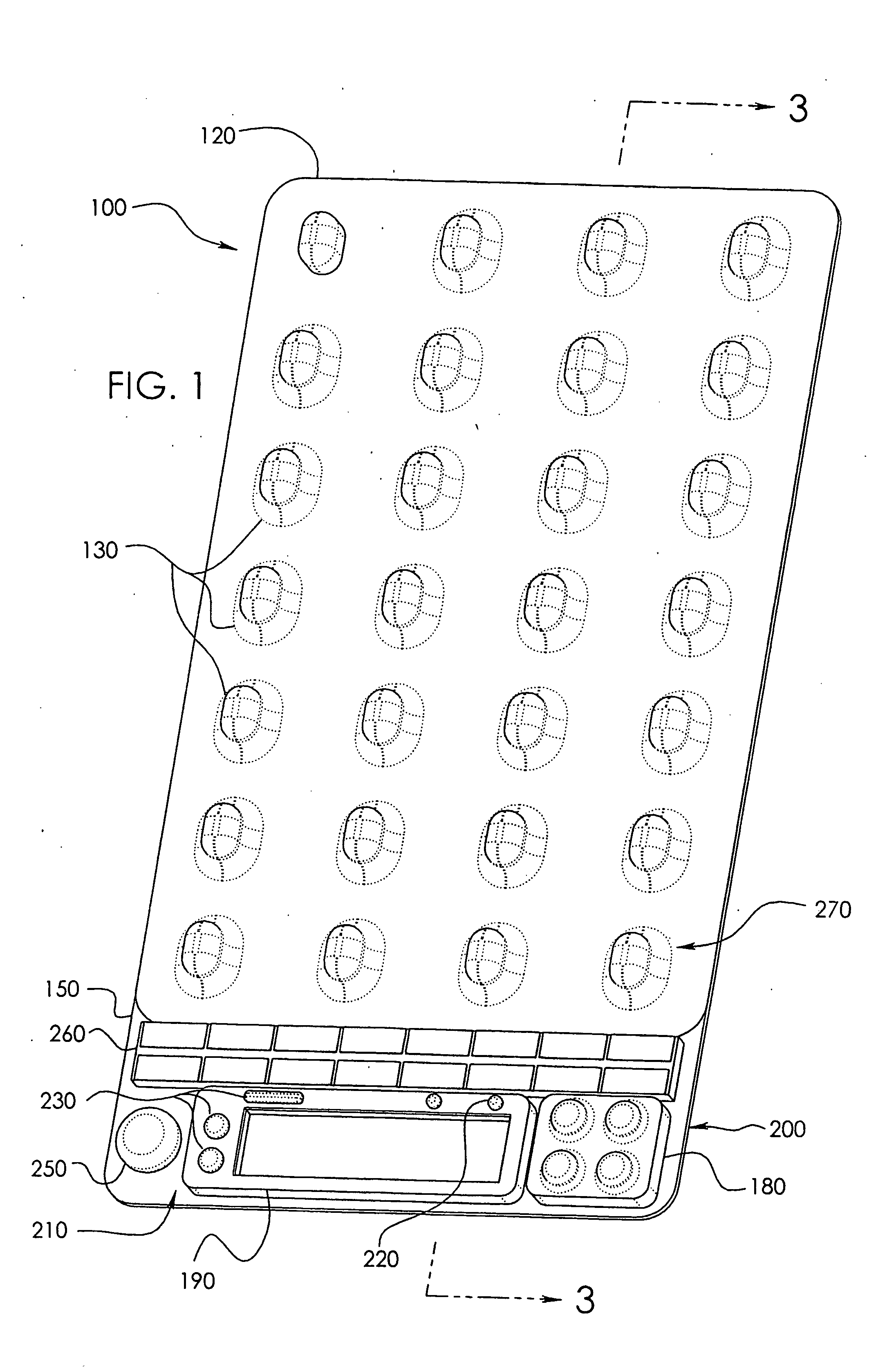Unit dose compliance monitoring and reporting device and system
a technology of dose compliance and reporting device, which is applied in the field of pharmaceutical prescription, can solve the problems of increasing the burden on medical professionals who must re-examine the patient, wasting time and money, and devoted to the treatment and management of medical conditions
- Summary
- Abstract
- Description
- Claims
- Application Information
AI Technical Summary
Benefits of technology
Problems solved by technology
Method used
Image
Examples
Embodiment Construction
[0042]In a wide range of possible embodiments and modifications and variations thereof, the heretofore unavailable unit dose medication compliance monitoring and reporting apparatus and system according to the principles of the invention is denoted in general in the various drawings and in FIGS. 1 and 3 by reference numeral 100. Those having any skill in the art of pharmaceutical medicament dispensement blister package technologies, such as that taught in U.S. Pat. No. 4,429,792, which is incorporated by reference in its entirety, should be able to comprehend that a variety of possible blister type package configurations are suitable for use with and contemplated by the instant invention.
[0043]If appropriately skilled in the related fields of technology and art, interested individuals may be able to readily comprehend that the unit dose medication compliance monitoring and reporting apparatus 100 according to the principles of the instant invention can be manifested in a variety of ...
PUM
 Login to View More
Login to View More Abstract
Description
Claims
Application Information
 Login to View More
Login to View More - R&D
- Intellectual Property
- Life Sciences
- Materials
- Tech Scout
- Unparalleled Data Quality
- Higher Quality Content
- 60% Fewer Hallucinations
Browse by: Latest US Patents, China's latest patents, Technical Efficacy Thesaurus, Application Domain, Technology Topic, Popular Technical Reports.
© 2025 PatSnap. All rights reserved.Legal|Privacy policy|Modern Slavery Act Transparency Statement|Sitemap|About US| Contact US: help@patsnap.com



